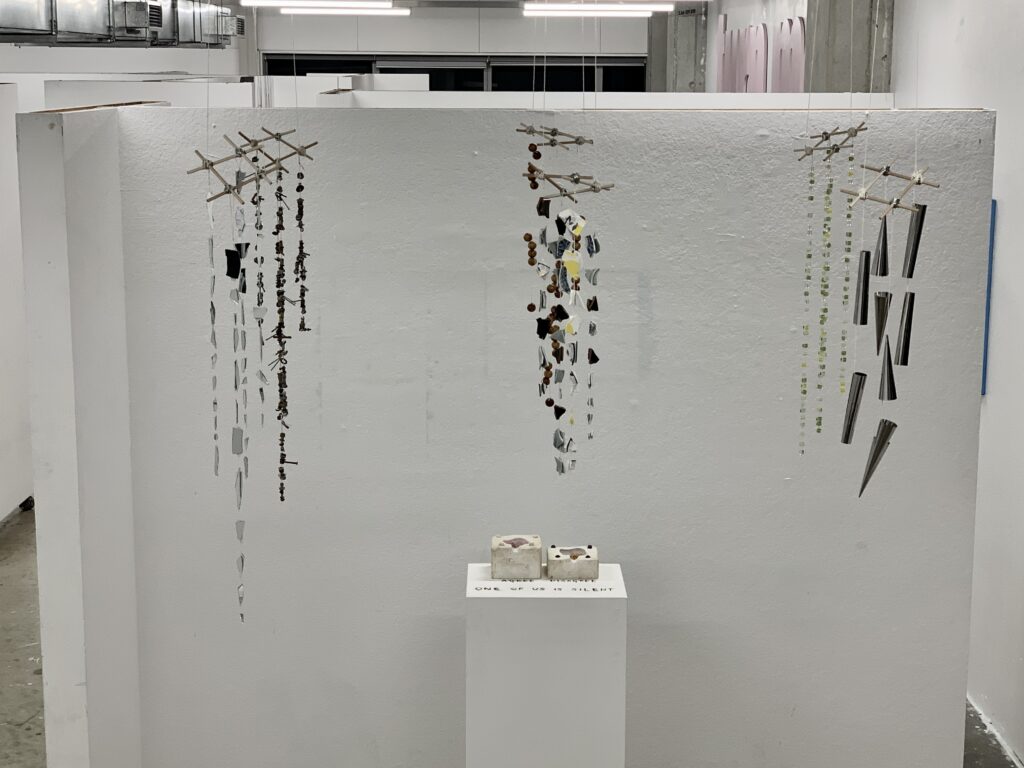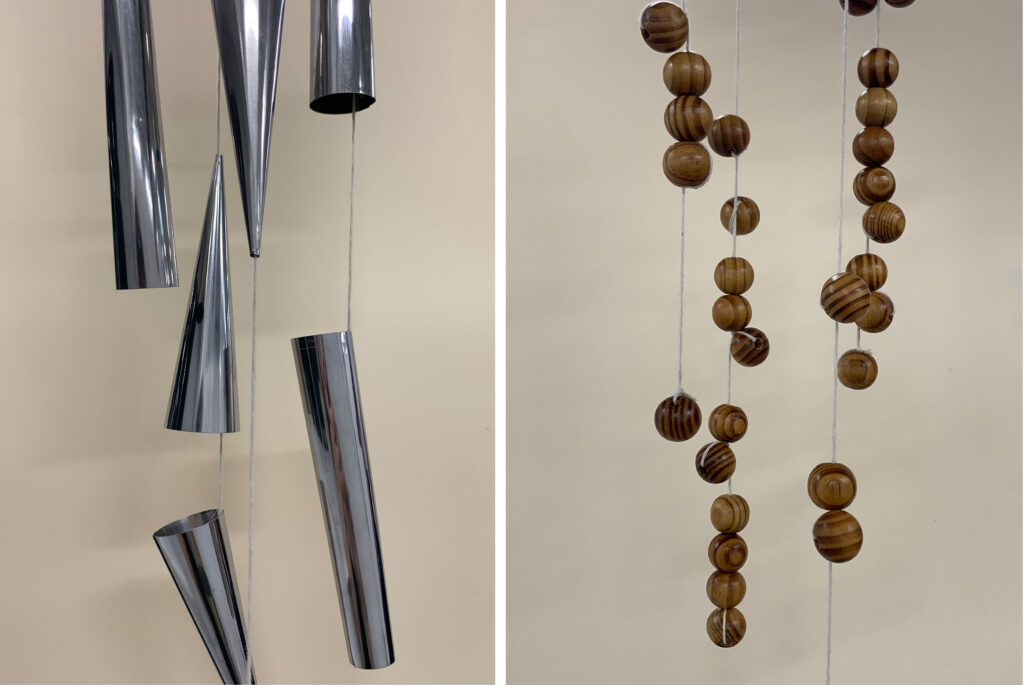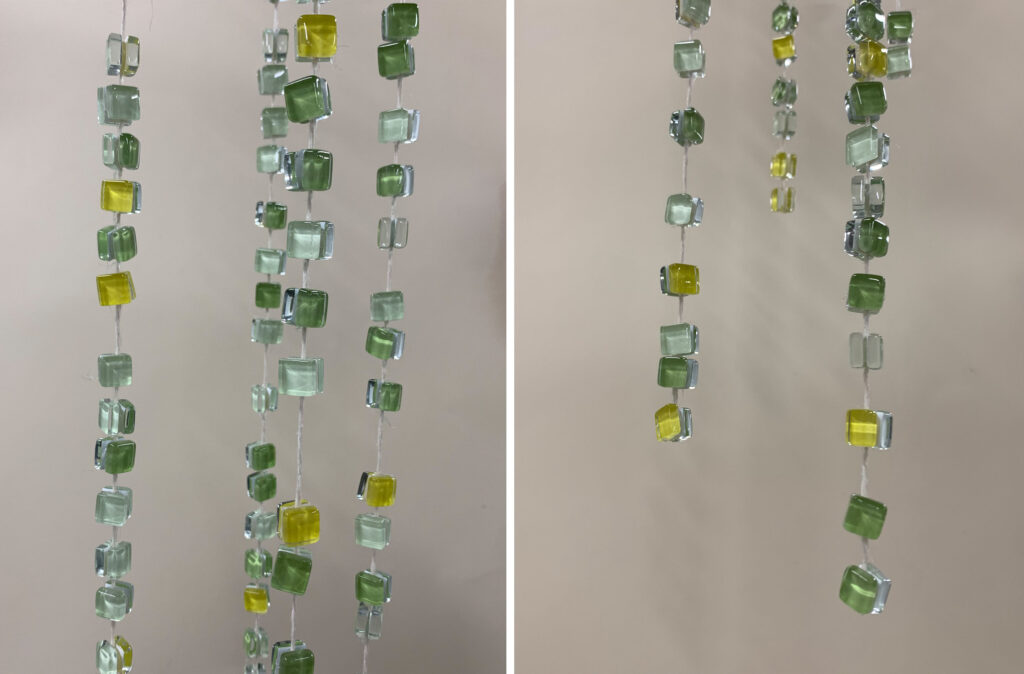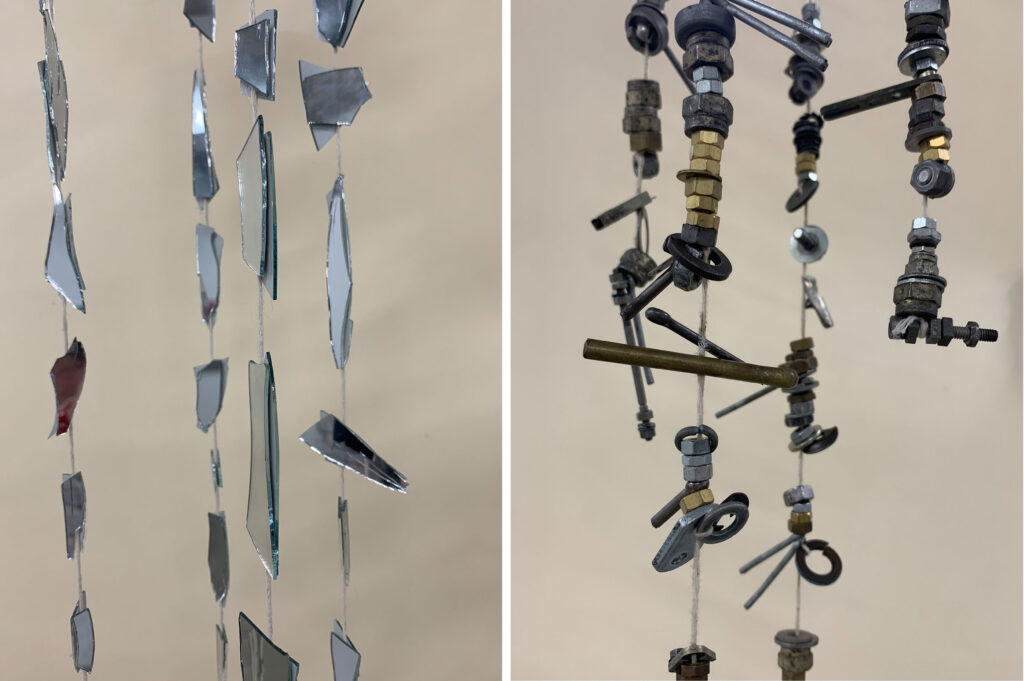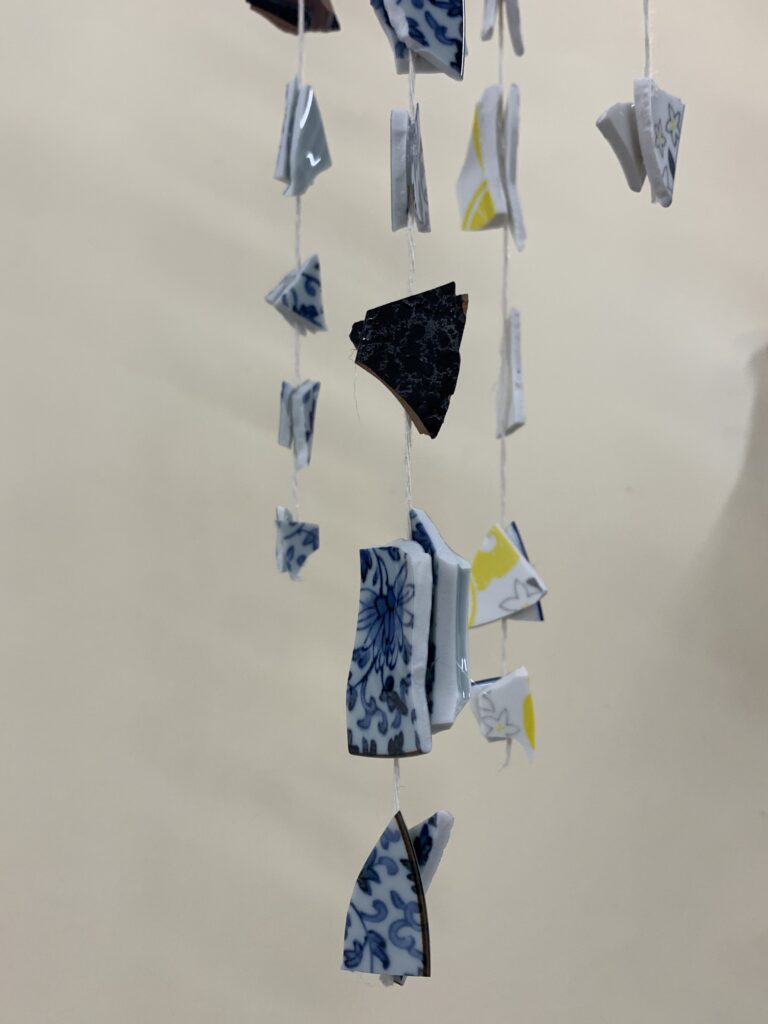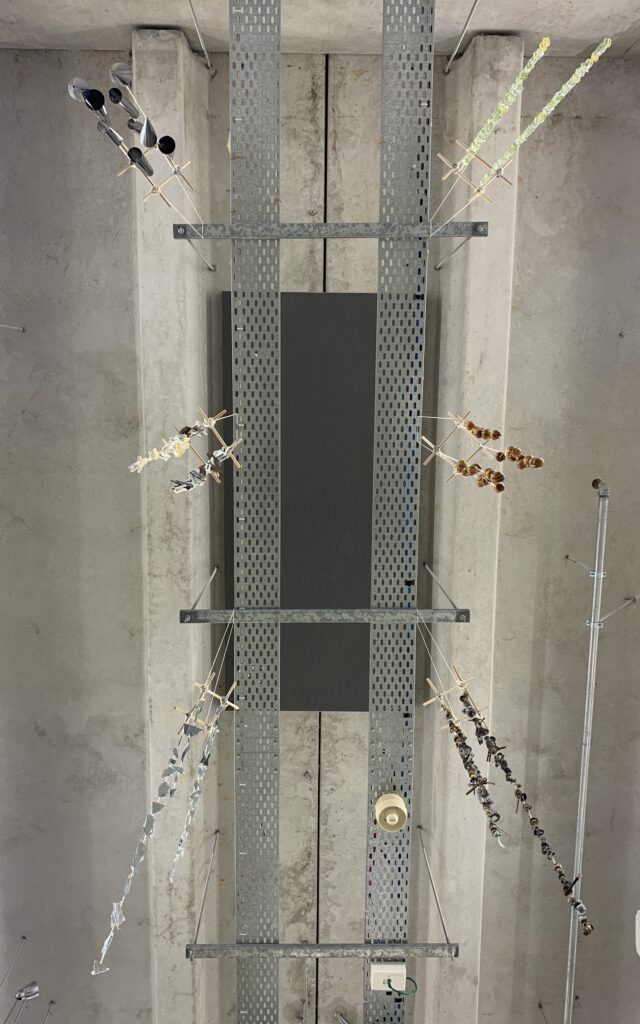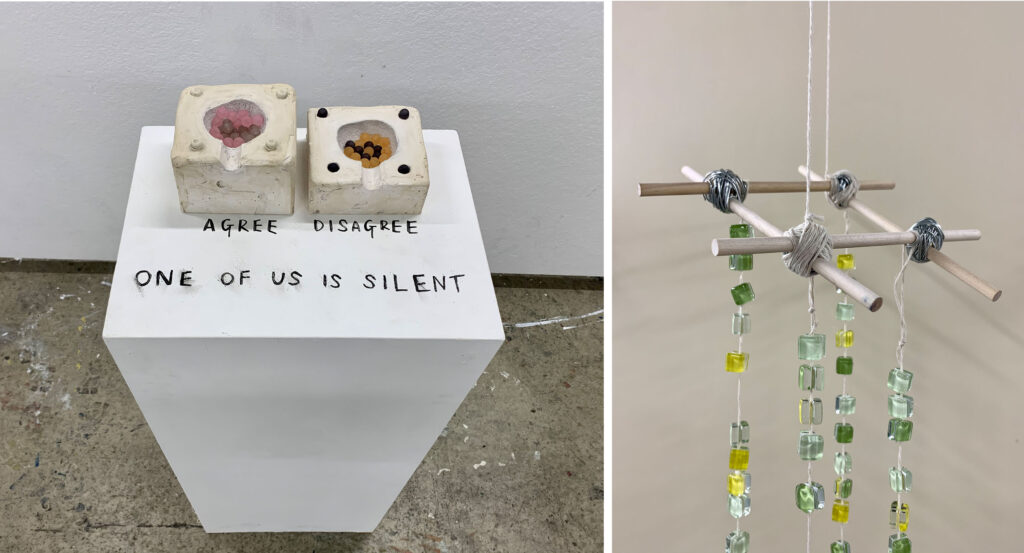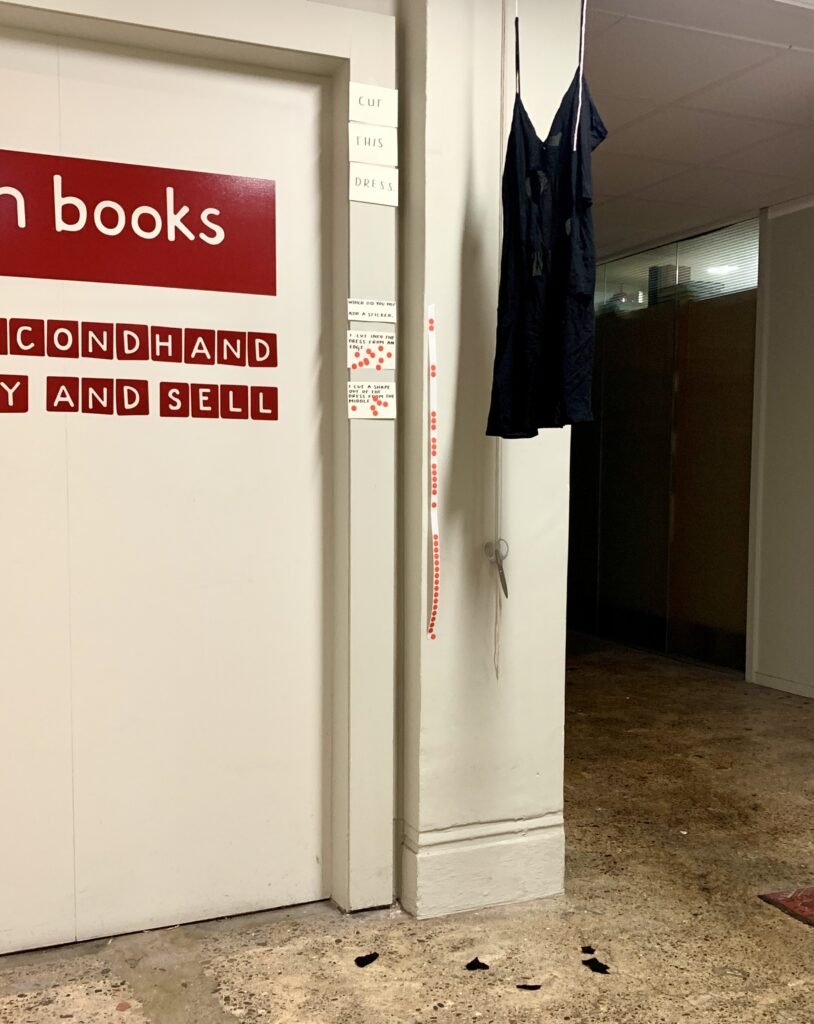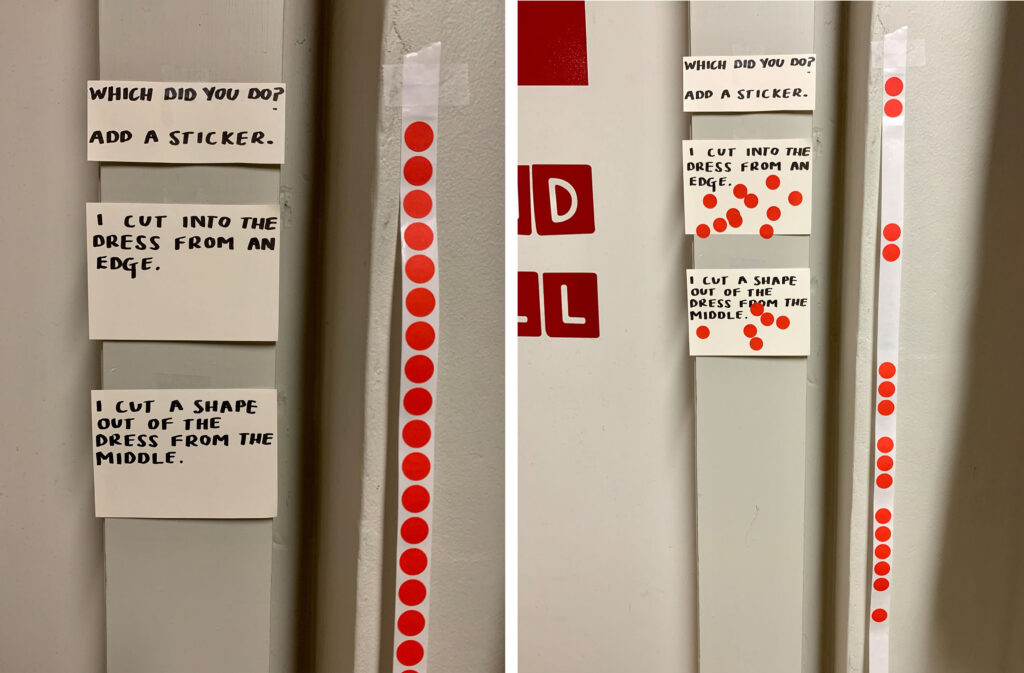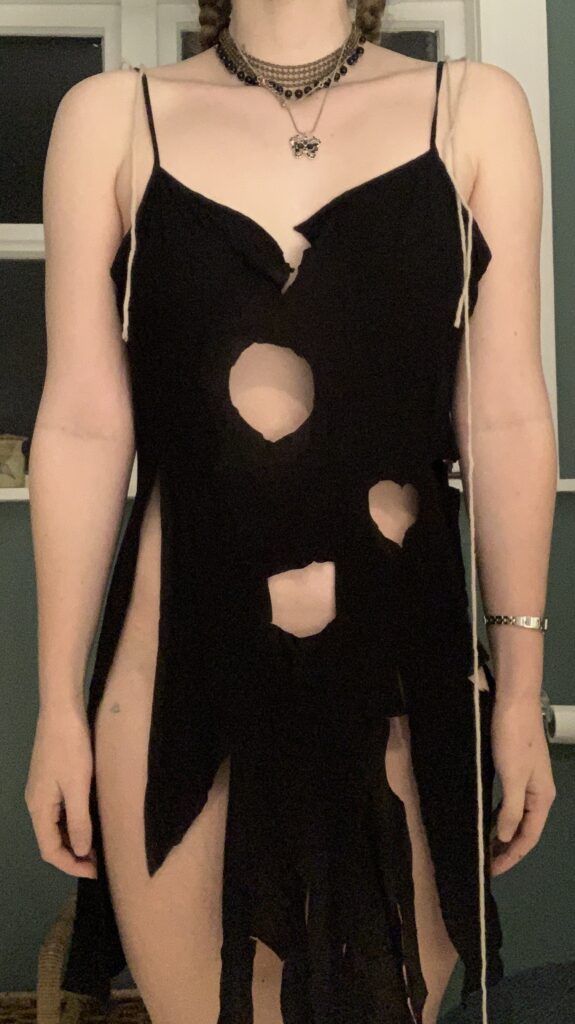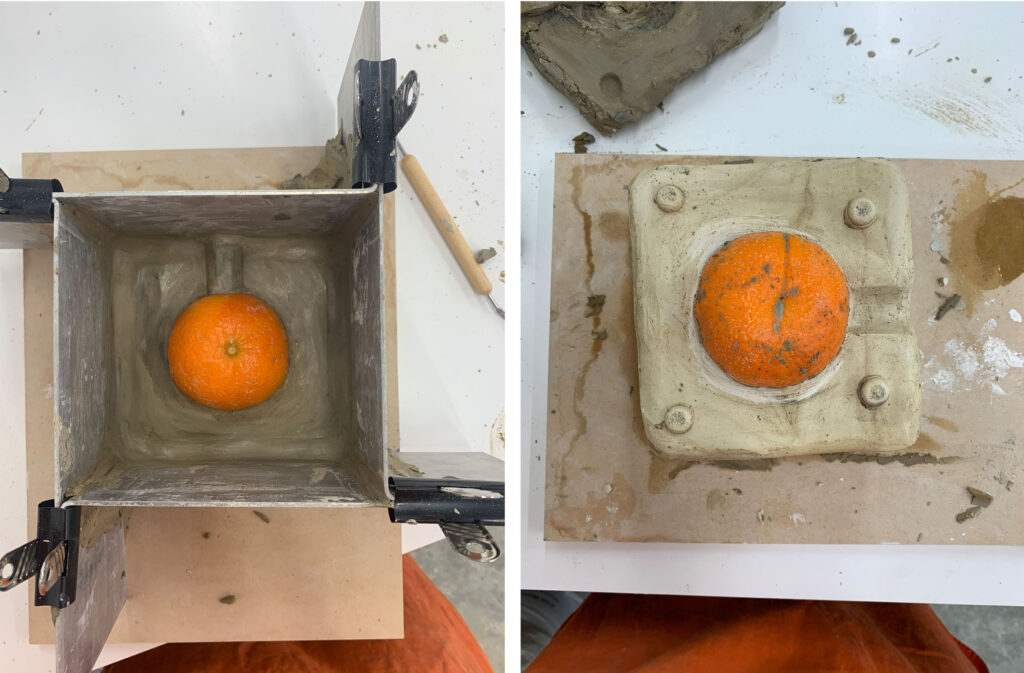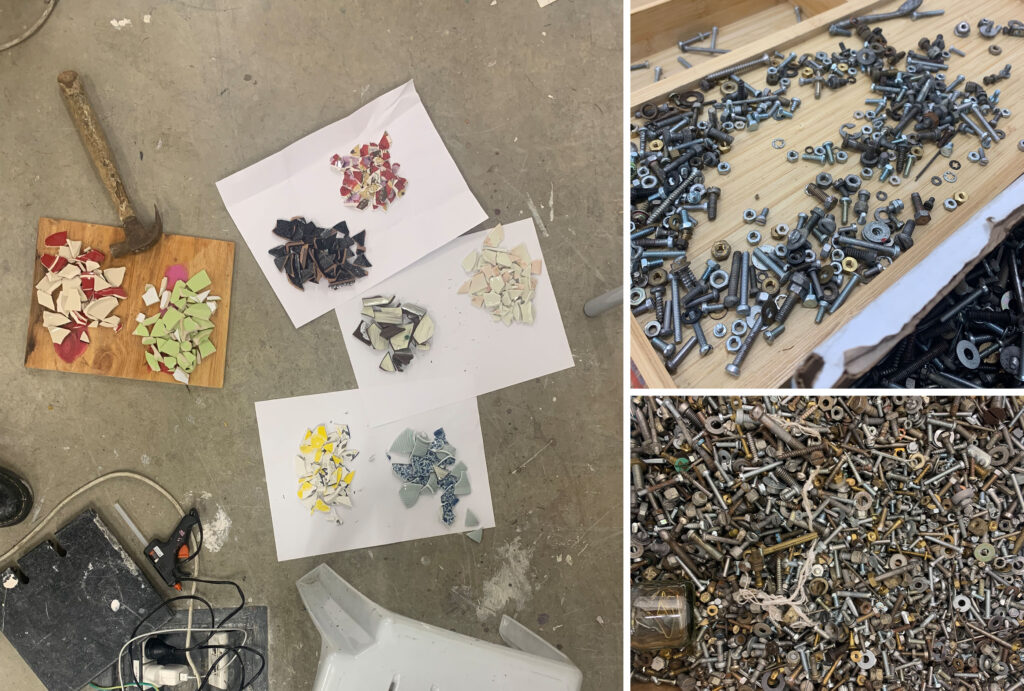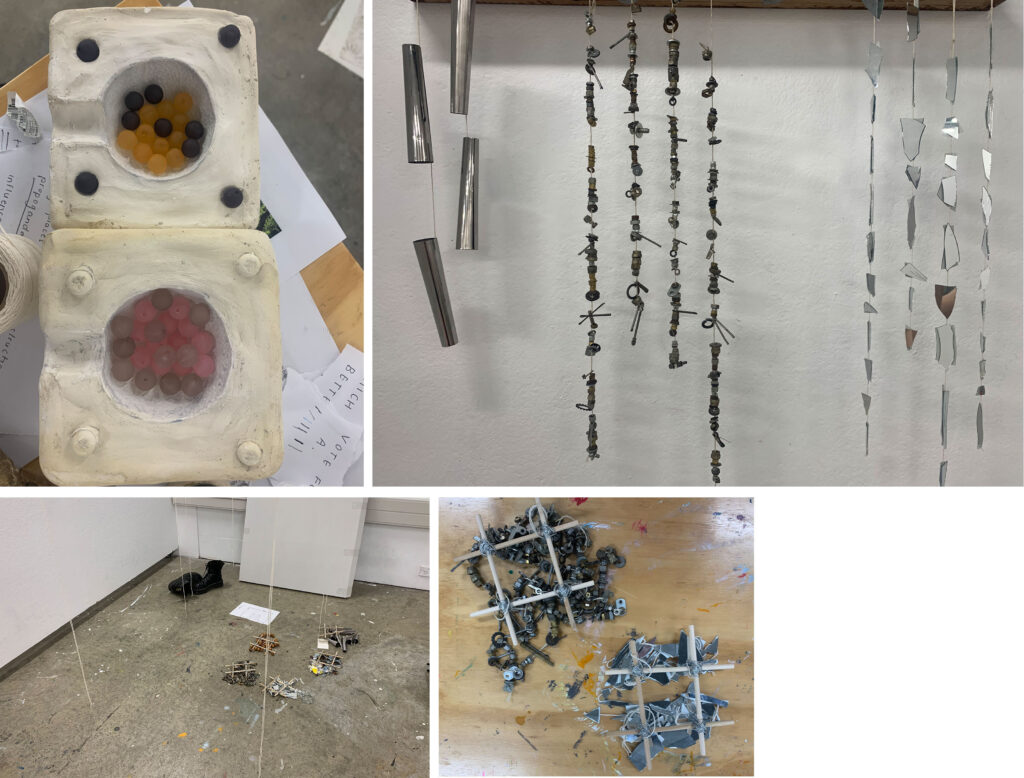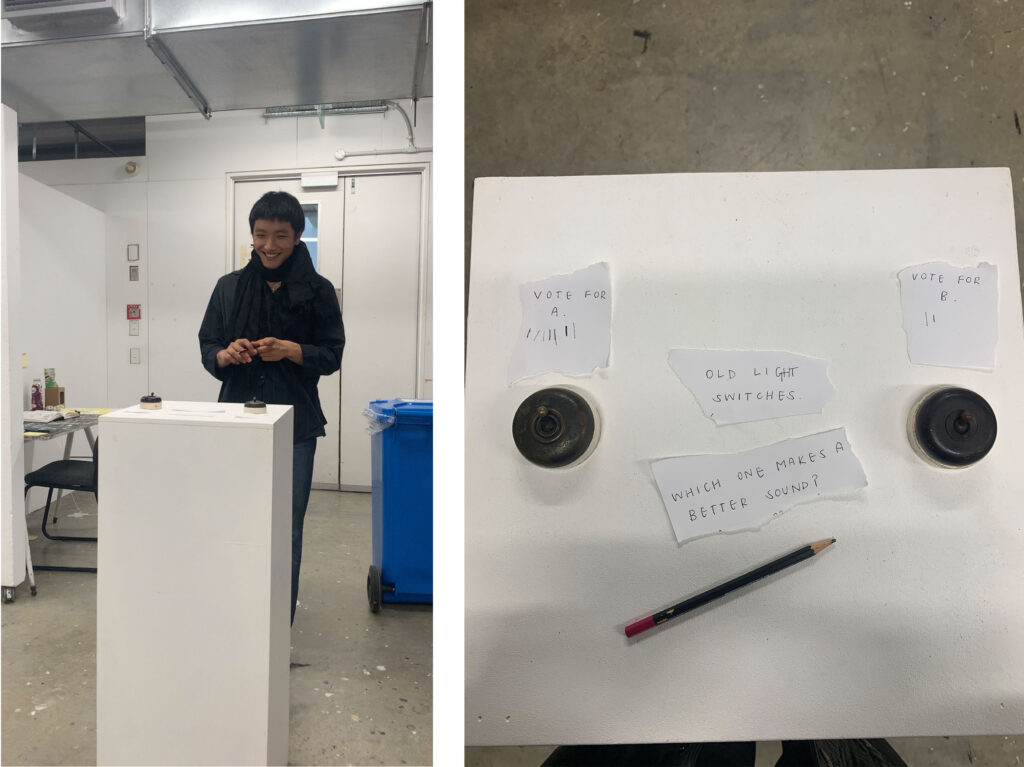Well, the last semester has not been at all easy for me and a myriad of things have impeded my ability to make art at certain points. However, in terms of the final sculpture, I’m incredibly pleased that I managed to pull it together, not to mention a little proud- it wasn’t something I thought I’d manage to do. But in the end, it was very close to what I had envisioned, and I’m always trying so desperately to replicate the image in my mind’s eye when it comes to any piece of art. I think it feels like an accurate representation of where I’m currently at as an artist, and that isn’t the same artist I was a year ago. That person would’ve hung strings of collaged paper, or glass beads at a push. This entire course has pushed me so much further than I thought it would and hurled me into areas I would’ve been so hesitant to explore. I think I see that in my level of resourcefulness and adaptability more than anything else; being able to create my final sculpture out of the time and materials I had and still feel as content as I do with the outcome.
Are there many things I could change? Of course, the perfectionist in me sees minute details that need tweaking and also a bigger picture; ways I could’ve pushed this work so much further both visually and contextually. I would’ve loved to incorporate sound design and digital audio into the piece, to have a dialogue form between the natural sounds and the manufactured, perfected ones. I would have also loved to pour time into researching different voting systems, highlighting some of their strengths and failings and, conscientiously, mimicking these in a warped way for people to interact with. As much as it’s been very touch-and-go, to present a sculpture which contains even some elements I take pride in is an accomplishment I’m genuinely happy with.

